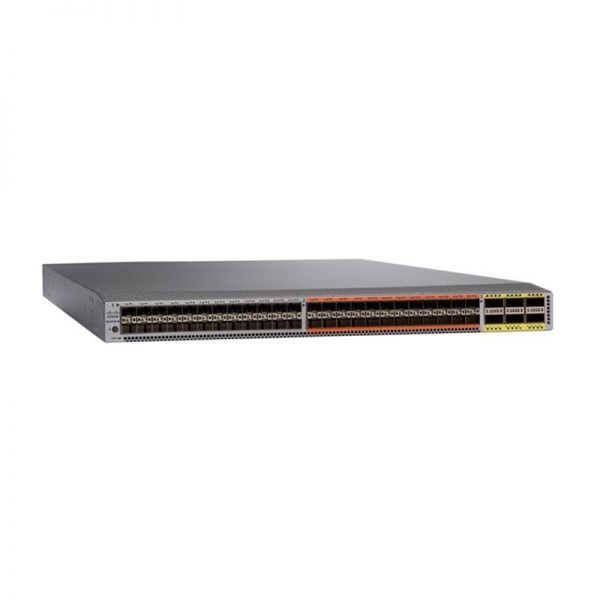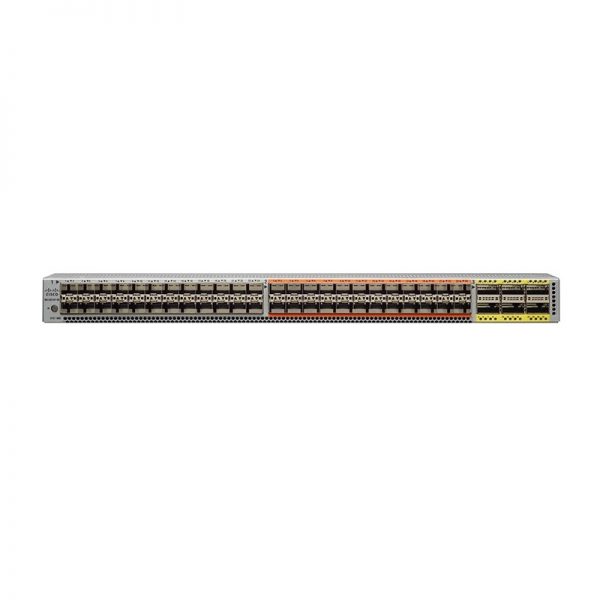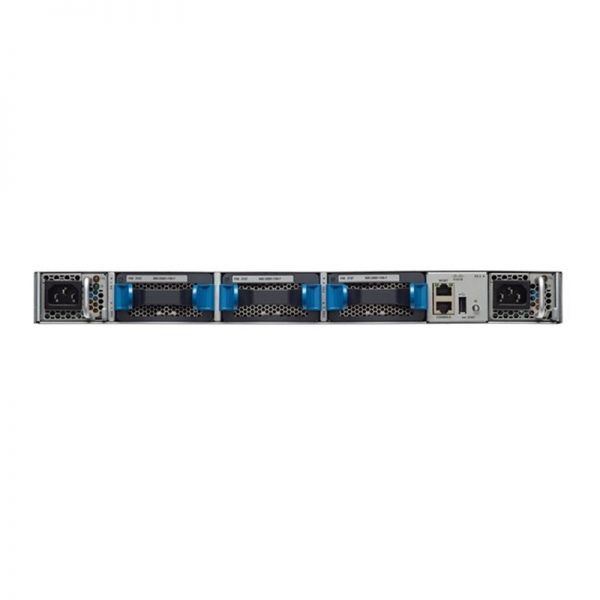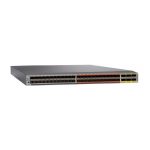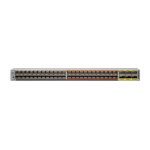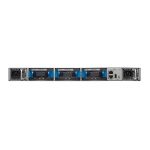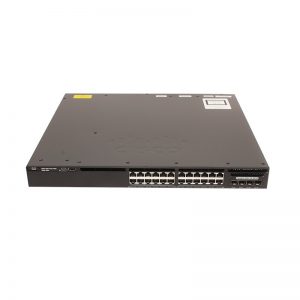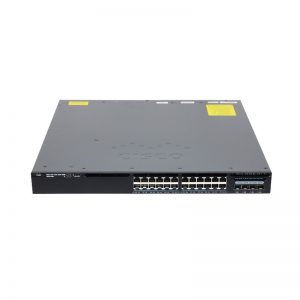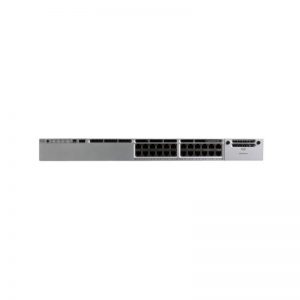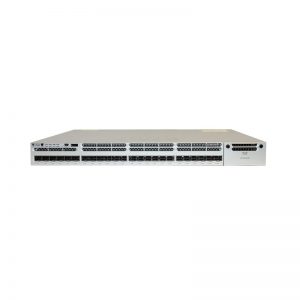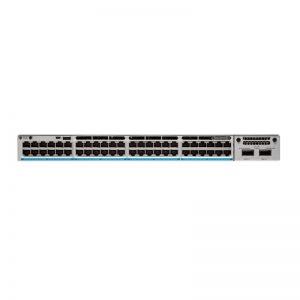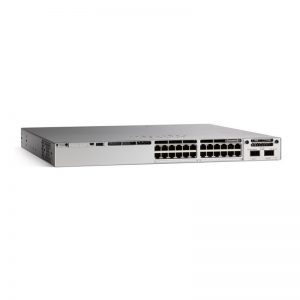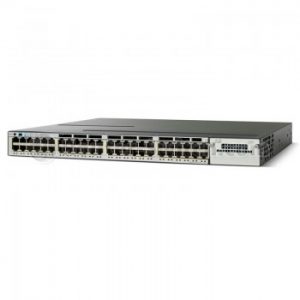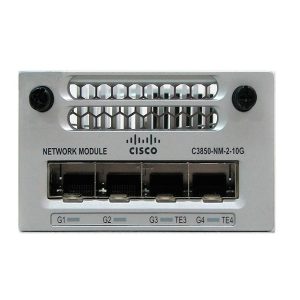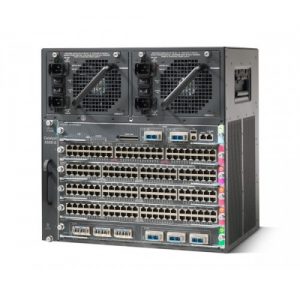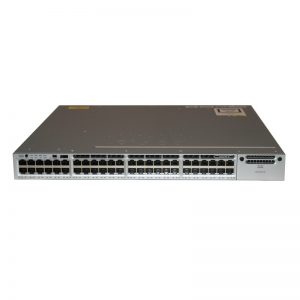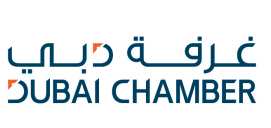Product Details
N5K-C5672UP-16G
$7,997.00
| Model: |
N5K-C5672UP-16G – Cisco Nexus 5000 Switches |
| Detail: |
Nexus 5672UP 1RU, 24x10G SFP+, 24pxUP SFP+, 6x40G QSFP+ |
Cisco Nexus 5672UP-16G switch (N5K-C5672UP-16G) is a minimal 1RU (1 Rack Unit), elite, low-inertness 1/10/40-Gigabit Ethernet, Fiber Channel, and Fiber Channel over Ethernet (FCoE) switch. It runs the business driving Cisco NX-OS Software working framework, giving highlights and abilities that are generally sent.
Main Features
16G
Switch
L3
managed
24 x 1 Gigabit / 10 Gigabit SFP+ + 24 x combo 1 Gigabit / 10Gb Ethernet / 2/4/8/16Gb Fibre Channel / FCoE SFP+ + 6 x 40Gb Ethernet / FCoE QSFP+ (breakout compatible)
rack-mountable
Description
N5K-C5672UP-16G Specification |
|
| Form factor N5K-C5672UP-16G | 1-rack unit |
| Number of ports | Up to 1152 with FEX |
| 10 GE | 48 ports |
| 40 GE | 6 true QSFP ports |
| Unified ports | 24 ports (Ethernet; FCoE; 2/4/8-gigabit FC) |
| 10 and 40 Gbps FCoE | Yes |
| Hardware VXLAN | Yes |
| NVGRE capable | Yes |
| Latency | 1 microsecond |
| Performance | ● Layer 2 and 3 hardware forwarding at 1.44 Tbps; 1071 mpps (64-byte packets)
● Support for up to 256,000 combined entries of MAC addresses and Address Resolution Protocol (ARP) entries ● Low latency of approximately 1 microsecond using cut-through forwarding for predictable, consistent traffic latency regardless of packet size, traffic pattern, or features enabled on 10 and 40 Gigabit Ethernet interfaces ● 25-MB buffer per 12 x 10 Gigabit Ethernet SFP+ interfaces ● Line-rate traffic throughput on all ports in Layer 2 and 3 mode |
| Interfaces N5K-C5672UP-16G | ● 48 fixed 1/10 Gigabit Ethernet SFP+ ports with 24 of the 48 ports being unified, and 6 fixed 40 Gigabit Ethernet QSFP+ ports with 10 and 40 Gigabit Ethernet FCoE support on all respective ports and 2/4/8-Gbps Fibre Channel on all the unified ports
● Expansion module: 24 SFP+ unified ports plus 2 x 40 Gigabit Ethernet QSFP+ ports ● Conversion of 40 Gigabit Ethernet ports to 10 Gigabit Ethernet interfaces through QSFP+ breakout cable ● Fabric extension through the Cisco Nexus 2200 and 2300 platforms |
| Layer 2 Features N5K-C5672UP-16G | ● Layer 2 switch ports and VLAN trunks
● IEEE 802.1Q VLAN encapsulation ● Support for up to 4000 VLANs ● Support for up to 4000 access control list (ACL) entries ● Rapid Per-VLAN Spanning Tree Plus (PVRST+) (IEEE 802.1w compatible) ● Multiple Spanning Tree Protocol (MSTP) (IEEE 802.1s): 64 instances ● Spanning Tree PortFast ● Spanning Tree root guard ● Spanning Tree Bridge Assurance ● Cisco EtherChannel technology (up to 16 ports per EtherChannel) ● Cisco vPC technology ● vPC configuration synchronization ● vPC shutdown ● Link Aggregation Control Protocol (LACP): IEEE 802.3ad ● Advanced port-channel hashing based on Layer 2, 3, and 4 information ● Jumbo frames on all ports (up to 9216 bytes) ● Pause frames (IEEE 802.3x) ● Storm control (unicast, multicast, and broadcast) ● Private VLANs ● Private VLAN over trunks (isolated and promiscuous) ● Private VLANs over vPC and EtherChannels ● VLAN remapping ● FabricPath ● EvPC and vPC+ with FabricPath ● Adapter FEX ● Data Center VM-FEX ● Support for up to 24 fabric extenders (Layer 2) with each Cisco Nexus 5672UP, 5672UP-16G, and 56128P Switch ● RDMA over Converged Ethernet (RoCE) using Data Center Bridging (DCB) support (DCB Exchange [DCBX] no drop and priority flow control [PFC]) |
| Layer 3 Features N5K-C5672UP-16G | ● Layer 3 interfaces: Routed ports, switch virtual interface (SVI), port channels, subinterfaces, and port-channel subinterfaces
● Support for up to 32,000 IPv4 and 8000 IPv6 host prefixes ● Support for up to 8000 multicast routes (IPv4) ● Support for up to 8000 IGMP snooping groups ● Support for 4000 Virtual Routing and Forwarding (VRF) entries ● Support for up to 4096 VLANs ● Equal-Cost Multipathing (ECMP) up to 64 ways ● 4000 flexible ACL entries ● Routing protocols: Static, Routing Information Protocol Version 2 (RIPv2), Enhanced Interior Gateway Routing Protocol (EIGRP), Open Shortest Path First Version 2 (OSPFv2), Border Gateway Protocol (BGP), and Intermediate System-to-Intermediate System (IS-IS) ● IPv6 routing protocols: Static, OPFv3, BGPv6, and EIGRPv6 ● IPv6 VRF-lite ● BFD support: OSPFv2, BGPv4, EIGRP, and VRF instances ● Policy-Based Routing (IPv4 and IPv6) ● Hot-Standby Router Protocol (HSRP) and Virtual Router Redundancy Protocol (VRRP) ● IP direct broadcast ● vPC+ routing protocol peering ● ACL: Routed ACL with Layer 3 and 4 options to match ingress and egress ACL ● Multicast: Protocol Independent Multicast Version 2 (PIMv2) sparse mode, Source-Specific Multicast (SSM), Bidir-PIM, Multicast Source Discovery Protocol (MSDP), IGMPv2 and v3, and Multicast VLAN Registration (MVR) ● VRF: VRF-lite (IP VPN); VRF-aware unicast; and BGP-, OSPF-, RIP-, and VRF-aware multicast ● Unicast Reverse-Path Forwarding (uRFP) with ACL; strict and loose modes ● Jumbo frame support (up to 9216 bytes) ● Support for up to 24 fabric extenders on each Cisco Nexus 5600 10-Gbps platform switch |
| Quality of Service (QoS) N5K-C5672UP-16G | ● Layer 2 IEEE 802.1p (class of service [CoS])
● 8 unicast queues and 8 multicast queues per port ● Per-port QoS configuration ● CoS trust ● Port-based CoS assignment ● Modular QoS CLI (MQC) compliance: IPv4 and IPv6 ● ACL-based QoS classification (Layers 2, 3, and 4) ● Flexible TCAM carving ● MAC and ARP hardware carving ● MQC CoS marking ● Per-port virtual output queuing ● CoS-based egress queuing ● Egress strict-priority queuing ● Egress port-based scheduling: Deficit Weighted Round-Robin (DWRR) ● Control-Plane Policing (CoPP): IPv4 and IPv6 |
| Security N5K-C5672UP-16G | ● Ingress ACLs (standard and extended) on Ethernet and virtual Ethernet ports
● Standard and extended Layer 2 ACLs: MAC addresses, protocol type, etc. ● Standard and extended Layer 3 and 4 ACLs: IPv4 and IPv6, Internet Control Message Protocol (ICMP and ICMPv6), TCP, User Datagram Protocol (UDP), etc. ● Ingress policing ● VLAN-based ACLs (VACLs) ● Port-based ACLs (PACLs) ● Named ACLs ● Optimized ACL distribution ● ACLs on virtual terminals (vtys) ● ACL logging (IPv4 only) ● Dynamic Host Configuration Protocol (DHCP) snooping with Option 82 ● Dynamic ARP Inspection ● IP source guard ● DHCP relay (up to 32 destinations) ● Ethernet port security ● IPv6 RACL, PACL, and VACL ● iSCSI type-length-value (TLV) |
| High-Availability Features | ● Cisco In-Service Software Upgrade (ISSU) for Layer 2
● Hot-swappable field-replaceable power supplies and fan modules ● N+1 and N+N power redundancy ● N+1 fan module redundancy |
| Management N5K-C5672UP-16G | ● Switch management using 10/100/1000-Mbps management or console ports
● CLI-based console to provide detailed out-of-band management ● In-band switch management ● Port-based locator and beacon LEDs ● Configuration synchronization ● Configuration rollback ● Secure Shell Version 2 (SSHv2) ● Telnet ● Authentication, authorization, and accounting (AAA) ● AAA with RBAC ● RADIUS ● TACACS+ ● Syslog (8 servers) ● Embedded packet analyzer ● SNMPv1, v2, and v3 (IPv4 and IPv6) ● Enhanced SNMP MIB support ● XML (NETCONF) support ● Remote monitoring (RMON) ● Advanced Encryption Standard (AES) for management traffic ● Unified username and passwords across CLI and SNMP ● Microsoft Challenge Handshake Authentication Protocol (MS-CHAP) ● Digital certificates for management between switch and RADIUS server ● Cisco Discovery Protocol Versions 1 and 2 ● RBAC ● SPAN on physical, PortChannel and VLAN ● ERSPAN ● Ingress and egress packet counters per interface ● Network Time Protocol (NTP) ● Cisco Generic Online Diagnostics (GOLD) ● Comprehensive bootup diagnostic tests ● Cisco Embedded Event Manager (EEM) ● Cisco Call Home ● Cisco Smart Call Home ● Default Interface ● Cisco Fabric Manager ● Cisco Prime DCNM ● CiscoWorks LAN Management Solution (LMS) |
| Data Center Bridging N5K-C5672UP-16G | ● CEE- and IEEE-compliant PFC (per-priority Pause frame support: IEEE 802.1Qbb)
● PFC link distance support: 20 km ● CEE-compliant DCBX Protocol ● CEE- and IEEE-compliant enhanced transmission selection |
| FCoE Features (Require Storage Services License) | ● T11 standards-compliant FCoE (Fibre Channel-BB-5)
● T11 FCoE Initialization Protocol (FIP) (Fibre Channel-BB-5) ● Any 10 or 40 Gigabit Ethernet port configurable as FCoE ● SAN administration separate from LAN administration ● Fibre Channel forwarding (FCF) ● Fibre Channel enhanced port types: VE, VF and VNP ● Direct attachment of FCoE targets ● Fabric Device Management Interface (FDMI) ● Fibre Channel ID (FCID) persistence ● Distributed device alias services ● In-order delivery ● Port tracking ● Cisco FCoE NPV technology ● N-port identifier virtualization (NPIV) ● Fabric services: Name server, registered state change notification (RSCN), login services, and name-server zoning ● Per-VSAN fabric services ● Cisco Fabric Services ● Distributed device alias services ● Host-to-switch and switch-to-switch Fibre Channel-SP authentication ● Fabric Shortest Path First (FSPF) ● Standard zoning ● Enhanced zoning ● Cisco Fabric Analyzer ● Cisco DCNM-SAN ● Storage Management Initiative Specification (SMI-S) ● Boot from SAN over vPC and Enhanced vPC (EvPC) ● FCP ● VSAN trunking ● Fabric Device Management Interface (FDMI) ● Fibre Channel ID (FCID) persistence ● Distributed device alias services ● In-order delivery ● Port tracking ● Cisco NPV technology ● Fabric binding for Fibre Channel ● Port security ● Fibre Channel traceroute ● Fibre Channel ping ● Fibre Channel debugging |
|
SNMP MIBs |
|
| Generic MIBs | ● SNMPv2-SMI
● CISCO-SMI ● SNMPv2-TM ● SNMPv2-TC ● IANA-ADDRESS-FAMILY-NUMBERS-MIB ● IANAifType-MIB ● IANAiprouteprotocol-MIB ● HCNUM-TC ● CISCO-TC ● SNMPv2-MIB ● SNMP-COMMUNITY-MIB ● SNMP-FRAMEWORK-MIB ● SNMP-NOTIFICATION-MIB ● SNMP-TARGET-MIB ● SNMP-USER-BASED-SM-MIB ● SNMP-VIEW-BASED-ACM-MIB ● CISCO-SNMP-VACM-EXT-MIB |
| Layer 3 MIBs | ● UDP-MIB
● TCP-MIB ● OSPF-MIB ● BGP4-MIB ● CISCO-HSRP-MIB |
| Ethernet MIBs | ● CISCO-VLAN-MEMBERSHIP-MIB
● CISCO-Virtual-Interface-MIB ● CISCO-VTP-MIB |
| Configuration MIBs | ● ENTITY-MIB
● IF-MIB ● CISCO-ENTITY-EXT-MIB ● CISCO-ENTITY-FRU-CONTROL-MIB ● CISCO-ENTITY-SENSOR-MIB ● CISCO-FLASH-MIB ● CISCO-SYSTEM-MIB ● CISCO-SYSTEM-EXT-MIB ● CISCO-IP-IF-MIB ● CISCO-IF-EXTENSION-MIB ● CISCO-SERVER-INTERFACE-MIB ● CISCO-NTP-MIB ● CISCO-IMAGE-MIB ● CISCO-IMAGE-CHECK-MIB ● CISCO-IMAGE-UPGRADE-MIB ● CISCO-CONFIG-COPY-MIB ● CISCO-ENTITY-VENDORTYPE-OID-MIB ● CISCO-BRIDGE-MIB |
| Monitoring MIBs | ● DIFFSERV-DSCP-TC
● NOTIFICATION-LOG-MIB ● DIFFSERV-MIB ● CISCO-CALLHOME-MIB ● CISCO-SYSLOG-EXT-MIB ● CISCO-PROCESS-MIB ● RMON-MIB ● CISCO-RMON-CONFIG-MIB ● CISCO-HC-ALARM-MIB ● LLDP-MIB |
| Security MIBs | ● CISCO-AAA-SERVER-MIB
● CISCO-AAA-SERVER-EXT-MIB ● CISCO-COMMON-ROLES-MIB ● CISCO-COMMON-MGMT-MIB ● CISCO-RADIUS-MIB ● CISCO-SECURE-SHELL-MIB ● TCP/IP MIBs ● INET-ADDRESS-MIB ● TCP-MIB ● CISCO-TCP-MIB ● UDP-MIB ● IP-MIB ● CISCO-IP-PROTOCOL-FILTER-MIB ● CISCO-DNS-CLIENT-MIB ● CISCO-PORTSECURITY-MIB |
| Miscellaneous MIBs | ● START-MIB
● CISCO-LICENSE-MGR-MIB ● CISCO-FEATURE-CONTROL-MIB ● CISCO-CDP-MIB ● CISCO-RF-MIB ● CISCO-ETHERNET-FABRIC-EXTENDER-MIB ● CISCO-BRIDGE-MIB ● CISCO-FCOE-MIB ● CISCO-PORTCHANNEL-MIB ● CISCO-ZS-MIB |
|
Standards |
|
| Industry Standards | ● IEEE 802.1D: Spanning Tree Protocol
● IEEE 802.1p: CoS prioritization ● IEEE 802.1Q: VLAN tagging ● IEEE 802.1Qaz: Enhanced transmission selection ● IEEE 802.1Qbb: Per-priority Pause ● IEEE 802.1s: Multiple VLAN instances of Spanning Tree Protocol ● IEEE 802.1w: Rapid reconfiguration of Spanning Tree Protocol ● IEEE 802.3: Ethernet ● IEEE 802.3ad: LACP with fast timers ● IEEE 802.3ae: 10 Gigabit Ethernet ● IEEE 802.3ba: 40 Gigabit Ethernet (Applies to 40G SR4, SR4-S, LR4, LR4-S, and CSR4 optics only) ● SFF 8431 SFP+ CX1 support ● RMON |





